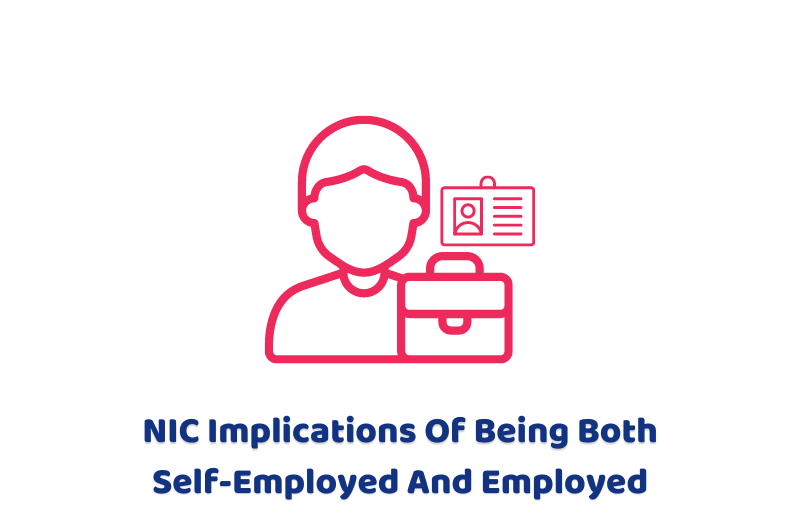With the cost-of-living crisis upon us more people are considering self-employment as well as employment to bring in extra money. This can lead to overpayments of National Insurance Contributions (NIC) as although tax is paid on aggregate income, NIC’s are different, being charged on each source. Class 1 NIC will be paid on the employed earnings with class 2 and/or class 4 NIC being levied on the self-employed earnings. There is a maximum amount of NIC payment for any tax year but you could find that you have overpaid by the end of the year.
Maximum Amount
There are two annual maxima for those who are both employed and self-employed. One is in respect of Class 1 and Class 2 NIC’s payable, the other refers to the maximum amount of Class 4 NIC’s payable by a contributor liable to Class 1, 2 and Class 4 NICs. For the tax year 2022/23 the calculation of the annual maximum has been complicated by the multiple changes in the year to include first the increase in the main and additional rates of Class 1 and Class 4 NIC from 6 April 2022, then the increase in the Class 1 primary threshold and Class 4 lower profits limit introduced in July 2022 and finally the repeal of the changes as contained in the Health and Social Care (repeal) bill.
The regulations provide three different sets of calculations in order to calculate the maximum amount payable for each of the two annual maxima. Depending upon the level of a contributor’s profits and the amount of Class 1 and 2 NIC’s paid, the maximum amount of Class 4 NICs due will vary. Different calculations are necessary because of the need to ensure that all contributors pay at least 3.25% (2022 to 2023 tax year) of profits in Class 4 NICs. Detailed worked examples can be found in the HMRC National Insurance Manual.
Reclaiming Overpaid NIC
When and how any refund is calculated and claimed will depend on type of NIC overpaid:
- Where having more than one employment has resulted in an overpayment the refund claim needs to be in writing within six years of the end of the affected tax year, (although where a reasonable excuse exists, HMRC may allow a later claim)
- there is no time limit to the claim where excess contributions have arisen due to the taxpayer being both employed and self-employed. HMRC states that they will calculate the amount due from the information submitted on the tax return and employers’ payroll submissions. Taxpayers will then be advised as to any over payment. However, many taxpayers may prefer to calculate the correct Class 2/4 NICs themselves and include those figures on their tax return.
Refunds of overpaid NIC will be made in the following order:
- Class 4.
- Class 1 at reduced rate.
- Class 2.
- Class 1 at standard rate.
Deferment Of NIC
Some contributors may be aware of the likelihood of NIC overpayment in the coming tax year (where there is more than one employment or the taxpayer earns £967 or more per week from one job over the tax year or £1,157 or more per week from 2 jobs over the tax year) and can apply for deferment of Class 1 NIC. Under deferment the contributor continues to make full contributions for one employment whilst paying a reduced rate of 3.25% on weekly earnings between £190 and £967 on the other (instead of the standard rate of 13.25%). Once a year the Contributions office calculates the final NIC bill issuing a demand for any balance thereby preventing overpayments. Deferment of Class 2/4 is no longer possible. Although HMRC supply a ‘breakdown of each class payment’ in their calculations, the schedule is not in sufficient detail that taxpayers who are employed and self-employed can be certain that the correct amount is being charged. Therefore such information will need to be requested.
Partner Note: Annual maxima : Reg 21 2001 NIC regulation (Class 1 NIC); Reg 100(1) 2001 NIC Regulations HMRC National Insurance Manual NIM24175 http://www.hmrc.gov.uk/manuals/nimmanual/nim24175.htm

